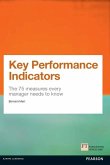Bachelor Thesis from the year 2019 in the subject Business economics - Controlling, grade: 1,7, University of Applied Sciences Stuttgart, language: English, abstract: This thesis deals with the questions, whether there is a correlation between strategies and financial Key Performance Indicators (KPls) and, how their mutual interdependence developed over time. The author wants to find out if the KPls are changed, if the strategy is changed consequently and if that change, again, affects the KPIs. Therefore, this work selectively focuses on the evaluation of annual reports between 2009 and 2018 and the development and application of an adjusted Balanced Score- card (=BSC) through the further investigation of its financial perspective. Key figures make a significant contribution to the management of organisations, as they create transparency by providing information about the corporate performance and the progress towards its stated goals - its strategy. lndicators and strategies seem inevitably linked, so that they lose their meaning or significance with- out each other. Due to a study on key performance indicators of PwC in the year 2017 in Luxembourg with over 40 executives surveyed, only 45 % of respondents believed their key performance indicators monitor the performance of long- term strategic goals and 31 % are not clearly aware of the link between their KPls and their long-term strategy. Those are alarming numbers. Often companies use too many, outdated or even too few KPls and the progress of the company's KPls towards its strategic objectives is not regularly updated and communicated to the staff and workforce. A lack of information makes the general company performance be the main reason for the executives for monitoring KPls. The need for change is known as 52 % of the executives surveyed see a need for improvement of their currently followed set of KPls. One of the challenges which affected the companies surveyed within their KPl process - including a lack of standardised processes across the industry - is the unclear business strategy and the KPls' irrelevancy towards the existing business/strategy itself. This arises the question how target-oriented do German companies align their KPls and how much do they depend on the corporate strategy? ls there a correlation definition the reason why the strategy reference does not become clear and should the KPls be adapted or even changed in the long term? Which strategy leads to which KPls, and which value drivers influence them?
Dieser Download kann aus rechtlichen Gründen nur mit Rechnungsadresse in A, B, BG, CY, CZ, D, DK, EW, E, FIN, F, GR, HR, H, IRL, I, LT, L, LR, M, NL, PL, P, R, S, SLO, SK ausgeliefert werden.









